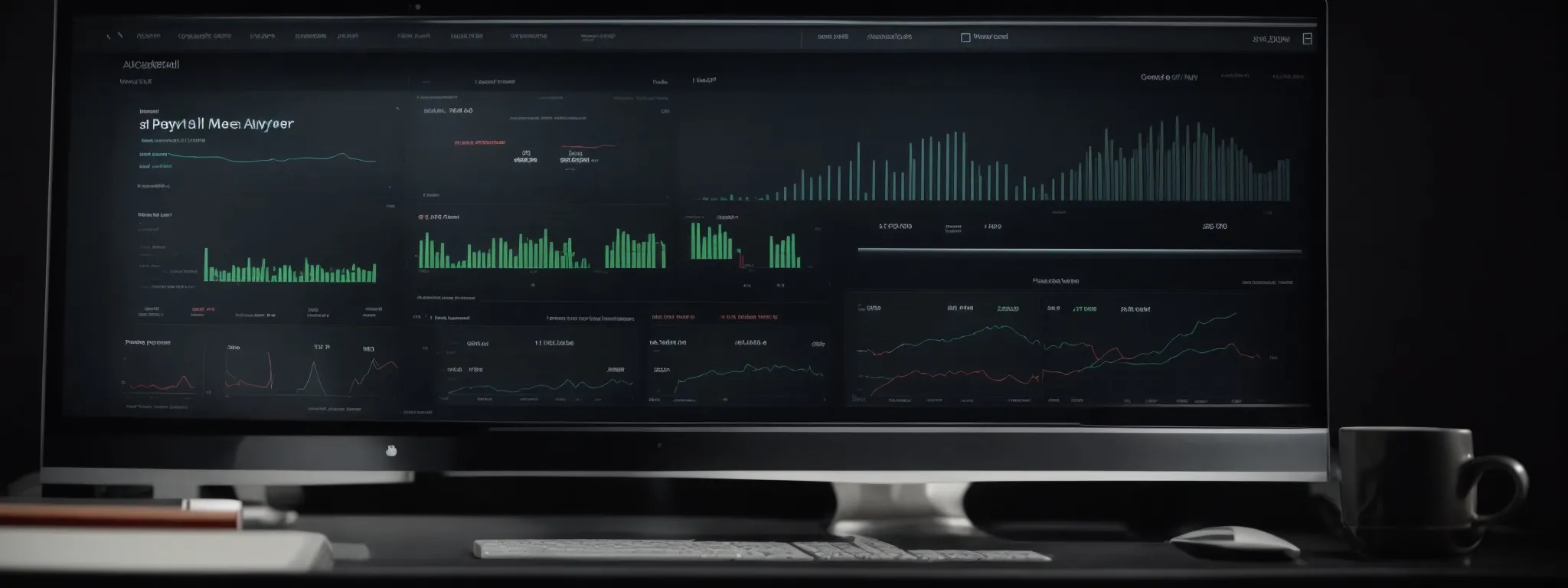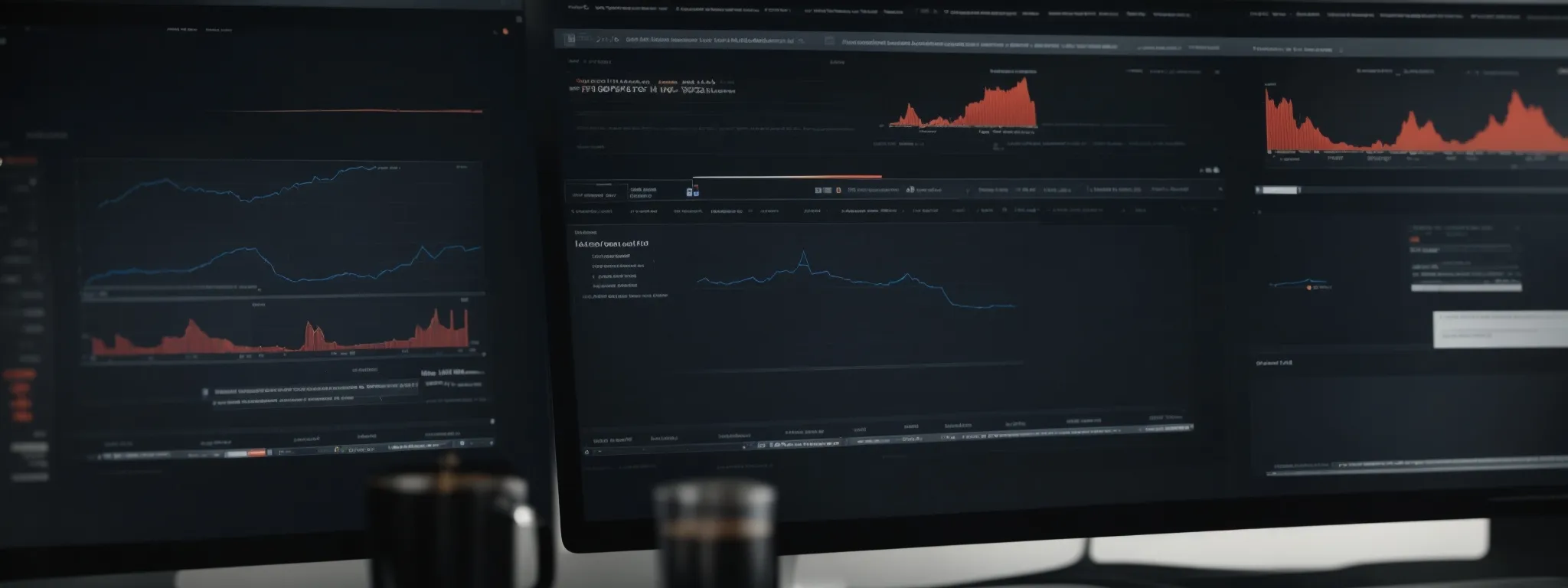What Is a Digital Marketing Campaign
Understanding Digital Marketing Campaigns: Definitions and Strategies Digital marketing campaigns are the beating heart of a company’s online presence, aiming to connect products and services with the […]
Understanding Digital Marketing Campaigns: Definitions and Strategies
Digital marketing campaigns are the beating heart of a company’s online presence, aiming to connect products and services with the right internet users.
With a blend of art and science, these dynamic campaigns help brands navigate the digital landscape, tailoring marketing tactics to an incredibly diverse audience.
The journey from crafting powerful messages to converting prospects requires a keen understanding of the digital ecosystem, including content production, search engine optimization, and leveraging social media.
In this guide, we’ll delve into the crucial elements that make up a digital marketing campaign and reveal strategic insights for unprecedented success.
Keep reading to master the digital marketing art and ensure your message resonates with your target audience.
Key Takeaways
- Effective Digital Marketing Campaigns Integrate Creativity and Data-Driven Analytics
- Multi-Channel Approaches Enhance Brand Presence and Cater to Diverse Consumer Preferences
- Personalized Content Is Key in Connecting With and Retaining the Consumer Base
- SEO Techniques and Keyword Optimization Are Critical for Online Visibility and Engagement
- Monitoring Campaign Performance Through Analytics Is Vital for Optimizing Marketing Strategies
Defining Digital Marketing Campaigns

In the realm of modern commerce, digital marketing campaigns stand as critical conduits between companies and their prospective clients.
These campaigns encompass a myriad of strategic elements tailored to capture attention, foster engagement, and ultimately drive conversions.
Unlike traditional marketing, which relies on static mediums such as print or broadcast, digital marketing employs a versatile array of tools and platforms that allow for real-time interaction with diverse audiences across various devices.
As the narrative of digital marketing unfolds, understanding its foundational components and distinguishing its unique approach become essential for businesses aiming to connect with internet users in meaningful ways.
The Basic Components of a Digital Campaign
At the heart of a successful digital marketing campaign lies a strategic blend of creativity and analytics. This combination includes Meticulously Researched Marketing Tactics to identify the target market, an engaging content plan that aligns with the campaign goal, and a conversion optimization strategy to turn prospects into loyal customers.
Key to these integrated strategies is the deployment of digital marketing solutions that streamline the complexities of a modern campaign. Here, effective use of tailored SearchAtlas SEO software and insightful Digital PR services can significantly amplify a brand’s message across the search engine market and marketing channels, ensuring maximum visibility and impact.
How Digital Campaigns Differ From Traditional Marketing
Digital marketing campaigns represent a marked departure from their traditional counterparts through the dynamic engagement possibilities afforded by the internet and social media. These campaigns leverage the capacity for immediate interaction, providing marketers with the ability to alter strategies in real time based on user responses and analytics.
While traditional marketing operates within limiting frameworks such as print cycles or broadcast slots, digital campaigns thrive on their versatile, omnipresent nature, expanding brand reach across multiple marketing channels and devices. This continuous connectivity permits a tailored approach to audience preferences, behavior patterns, and facilitates an ongoing conversation rather than a static message.
The Lifecycle of a Digital Marketing Campaign

A pivotal component of any digital marketing endeavor is its lifecycle, an iterative process that ensures marketing efforts are not just artful, but also scientifically grounded in data and analysis.
This lifecycle embarks with Planning and Goal Setting, crafting a vigilant marketing plan predicated on tangible objectives and a profound comprehension of the designated audience.
Next, the Execution and Management phase brings the campaign to life through tactical rollouts across selected marketing channels.
The journey follows through to Analysis and Optimization, where a crusade’s performance is scrupulously monitored, and strategies are refined to enhance effectiveness dynamically.
Culminating in Post-Campaign Evaluation, experts methodically dissect the campaign’s outcomes, a vital step for discerning insights and best practices for future initiatives.
Understanding each phase of this lifecycle is indispensable for businesses striving to construct impactful digital marketing campaigns that resonate with consumers and garner formidable results.
Planning and Goal Setting
Embarking on the elaboration of a marketing scheme, professionals delve into Planning and Goal Setting. They sculpt a marketing plan brimming with articulated objectives and well-profiled target demographics, which serves as the blueprint for the digital foray.
Within this phase, specific markers for success are established, tying in directly with a company’s broader marketing strategy and business aspirations. Setting these campaign milestones informs the overarching narrative of the marketing journey: a strategic tale of targeting, engagement, and conversion.
| Phase | Activities | Outputs |
|---|---|---|
| Planning and Goal Setting | Market analysis, demographic targeting, goal formulation | Marketing plan, KPIs, target audience profile |
| Execution and Management | Content creation, channel distribution, pacing schedules | Active campaigns, engagement metrics, marketing assets |
| Analysis and Optimization | Data collection, performance review, strategy adjustment | Analytics reports, optimization plans, improved tactics |
| Post-Campaign Evaluation | Results assessment, insight extraction, lessons learned | Final report, strategy refinements, best practice guidelines |
Execution and Management
When the wheels of a digital marketing campaign begin to turn, the Execution and Management phase swings into full gear. Here, practitioners unfurl the content meticulously crafted to resonate with the target audience, deploying it through precise channels to ensure that every blog post, social media update, and email marketing campaign reaches and engages the intended demographic.
As the campaign progresses, management becomes an exercise in agility, adapting strategies to the ebb and flow of campaign metrics. The precise tuning of PPC Google Ads strategy, careful monitoring of SEO reputation management, and the application of Amazon PPC know-how are all critical to maintaining the campaign’s momentum and optimizing the conversion rate.
Analysis and Optimization
In the Analysis and Optimization stage, digital marketing professionals pore over the data harvested throughout the campaign’s duration. They employ this data to discern patterns, determine efficacy, and pinpoint areas where the campaign’s performance can be bolstered, considering variables such as user engagement, conversion data, and the effectiveness of different marketing channels.
Optimization at this juncture is not a one-off adjustment but a continual process that adapts the campaign to the evolving landscape of digital interaction. Professionals leverage tools like SEO Content Assistant and link building services to refine content and enhance search engine ranking, while PPC strategies and SEO reputation management tactics are adjusted to maintain agile and responsive marketing maneuvers.
Post-Campaign Evaluation
In the critical stage of Post-Campaign Evaluation, the focus shifts to a rigorous dissection of results garnered from the digital marketing efforts. This evaluative process is instrumental in measuring the extent to which the initial marketing plan’s objectives have been met and determining the overall return on investment for the campaign.
Positioned at the culmination of the campaign, professionals conduct a comprehensive analysis to draw actionable insights and understand the narrative behind the data. It’s here that the efficacy of tools such as SearchAtlas SEO software or the impact of Digital PR services is assessed, guiding the strategic refinements for subsequent marketing initiatives.
Core Strategies of Digital Marketing Campaigns

A digital marketing campaign’s effectiveness hinges on the seamless integration of multi-channel strategies, which ensures a brand’s presence is felt far and wide across the digital landscape.
Recognizing the importance of a multi-channel approach not only broadens the scope of engagement but also reinforces the message across various touchpoints, providing a cohesive user experience.
As consumers navigate through an ever-expanding array of digital platforms, the imperative for brands to assert their narrative through thoughtful integration becomes undeniably important.
Diversified yet unified, these multi-channel approaches stand as pillars of a sophisticated digital marketing strategy.
Multi-Channel Approach and Its Importance
The gravitas of a multi-channel approach in digital marketing campaigns cannot be overstated; it permits a brand to cast a wider net, appealing to prospects across varied marketing channels and touchpoints. This strategic dispersion not only ensures a pervasive presence but also caters to the preferences of a diverse audience, optimizing the reach and resonance of the campaign’s messaging.
Embracing a multi-channel strategy enhances the potential for customer interaction and conversion by presenting a consistent brand story through different mediums, from social media to email marketing campaigns. Such an approach recognizes the value of meeting consumers where they are, forging meaningful connections that can evolve into ongoing relationships, fueling both brand loyalty and advocacy.
Integration of Various Digital Platforms
The integration of various digital platforms is critical to the potency of any digital marketing campaign. By utilizing a composite of platforms, from influential blogs to social media networks, brands are positioned to disseminate their messaging promptly and effectively to a diverse audience.
Effectual integration ensures that whether a consumer interacts with the brand through a landing page, an email list, or an engaging influencer on social media, the core message remains consistent and potent. Crafting a brand experience that is both unified and adaptable to the individual platform resonates deeply with consumers, enhancing brand awareness and driving campaign success:
| Platform | Role in Integration | Benefit to Campaign |
|---|---|---|
| Social Media | Engagement and Virality | Expands reach and fosters community |
| Email Marketing | Direct Communication | Cultivates relationships and encourages repeat interaction |
| Landing Pages | Conversion Focus | Guides prospects through the sales funnel |
| PPC and SEO | Visibility and Targeting | Increases brand presence and captures intent-driven traffic |
Thus, a strategic orchestration of platforms propels digital campaigns, enabling them to weave through the digital tapestry with agility and precision. Tailoring each platform’s presence to serve the campaign’s overarching objectives unifies the narrative, reinforcing the marketing message and heightening the probability of a successful conversion.
Components of a Successful Digital Marketing Strategy

In the intricate web of digital marketing, the success of a strategy is often determined by the precision of its execution and the quality of its composition.
Crafting a robust digital marketing campaign requires a deep dive into the practices of identifying the most responsive target audience, cultivating content that truly engages, and meticulously leveraging data to tailor marketing efforts in a way that feels both personal and persuasive.
Each component stands as a pillar in the architecture of a marketing strategy that aims to not only reach but resonate with, and ultimately retain, the consumer.
Identifying Target Audience and Segmentation
Identifying the target audience is the cornerstone of any successful digital marketing strategy, setting the stage for tailored content and engagement tactics that resonate deeply and directly with the preferred segment of consumers. The process of audience segmentation goes beyond basic demographics, dissecting finer nuances such as behavior patterns, interests, and lifestyle choices to formulate a nuanced marketing approach that speaks distinctly to each group.
Segmentation enhances the efficacy of marketing efforts by allowing professionals to concentrate resources on subspecialties within their market, maximizing the potential for meaningful interactions and conversions. This strategic division coalesces data-driven insights with a keen understanding of customer needs, resulting in a refined focus that elevates the personalization of each campaign to a craft rather than a mere tactic.
Creating Engaging Content
Engaging content serves as the lifeblood of a digital marketing campaign, drawing the audience into a narrative that not only informs but also entertains and inspires. It is the vehicle for emotional connection and brand storytelling, crafted to leave a lasting impact on the consumer’s mind and push them closer to the desired action.
The creation of such content demands a strategic blend of insight and creativity, requiring content marketers to understand deeply their audience’s interests, pain points, and aspirations. By infusing the content with this understanding, every piece becomes a potent tool for driving brand affinity and customer loyalty.
| Content Type | Role in Strategy | Benefit to Campaign |
|---|---|---|
| Informative Blog Posts | Educational Engagement | Builds authority and trust with the audience |
| Captivating Social Media Content | Community Interaction | Encourages shares and conversations around the brand |
| Compelling Video Content | Visual Storytelling | Increases engagement and emotional connection |
| Email Newsletters with a Personal Touch | Direct and Personalized Communication | Deepens consumer relationships and boosts retention |
Leveraging Data for Personalized Marketing
Leveraging data plays a pivotal role in the customization of digital marketing campaigns, providing a framework for personalized marketing that reaches consumers with precision and relevance. Through Careful Analysis of Interactions, preferences, and behaviors gathered from various touchpoints, marketers are empowered to sculpt marketing messages that resonate on a personal level, fostering a stronger connection with the audience.
The strategic employment of data-driven insights allows for adaptive targeting, ensuring that marketing content is dynamically modulated to address the evolving needs and interests of the consumer. By orchestrating personalized experiences, companies can significantly enhance consumer engagement, driving loyalty and prompting an uptick in conversion rates as individuals feel increasingly understood and valued by the brand.
The Role of Content in Digital Campaigns

In the tapestry of a digital marketing campaign, content dawns as a central figure, critically shaping the campaign’s resonance with its audience.
It functions as a medium through which a brand can narrate its story, convey value, and establish a rapport with its targeted consumers.
The types of content utilized in digital marketing are variegated, ranging from blog posts that seek to educate and inform, to social media bursts intended to spark conversations and engagement.
The task of measuring content performance, therefore, becomes a vital part of the strategic process, offering quantitative insights into how well the content engages and captivates the intended audience.
As such, in the digital realm, the potency of content is not merely a component of its creation but equally of its capacity to evoke interaction and measureable engagement.
Types of Content Used in Digital Marketing
Digital marketing campaigns thrive on a diverse arsenal of content types, each playing a strategic role in engaging the target audience. Blog posts, for instance, provide depth and detailed information, helping a brand to establish thought leadership and credibility in its industry.
Visual content, such as infographics and video, offers a dynamic way to present information and stories, catering to the growing preference among users for media that can be quickly consumed and shared:
- Blog Posts: Establish authority with informative, well-researched articles.
- Infographics: Present complex data visually to enhance understanding and retention.
- Videos: Engage and entertain to build a connection and encourage social shares.
- Social Media Posts: Stimulate interaction and build community around a brand.
Email campaigns and newsletters personalize the consumer experience, harnessing data to deliver tailored messages that resonate with specific segments of the audience. Employing a rich mix of content forms ensures a robust, multi-faceted approach to digital marketing that can adapt to and satisfy the diverse demands of a dynamic consumer base.
Measuring Content Performance and Engagement
Measuring content performance and engagement is an indispensable aspect of assessing a digital marketing campaign’s efficacy. By tracking indicators such as click-through rates, time spent on page, and social sharing metrics, practitioners gain a clear view of how content resonates with the audience, allowing for data-driven refinements to marketing strategies.
In this analytical endeavor, tools like LinkGraph’s SearchAtlas SEO software become crucial assets, offering detailed insights into content reach and audience behavior. These analytics empower marketing professionals to fine-tune content, ensuring it aligns with audience preferences and campaign objectives, thereby maximizing engagement and bolstering campaign success.
SEO Techniques in Digital Marketing Campaigns

SEO techniques stand as a keystone in forging successful digital marketing campaigns, providing the roadmap for amplified online visibility and enhanced user engagement.
The arena of search engine optimization is complex, with its efficacy resting on the agility and finesse with which one executes both keyword research and optimization as well as on-page and off-page strategies.
Whether the goal is to climb the search engine ranks or to create content that resonates with the target audience—the intricate dance between these SEO techniques is critical in navigating the competitive digital terrain.
Keywords Research and Optimization
In the atlas of a digital marketing campaign’s success, keyword research and optimization represent pivotal landmarks. These processes compel marketing experts to meticulously identify the terms and phrases most relevant to their target audience, ensuring that the content they create aligns seamlessly with users’ search intents and behaviors.
Utilization of the Keyword Researcher tool, an integral feature of LinkGraph’s SearchAtlas SEO software, allows digital marketing professionals to delve into the linguistic currents that propel their audience’s online searches. By harnessing this information, marketers craft content infused with optimal keywords, bolstering their brand’s visibility and prominence within the search engine landscape.
On-Page and Off-Page SEO Strategies
On-page SEO strategies are instrumental in enhancing the relevance and usability of a website’s content for both search engines and users. They encapsulate crucial elements such as optimized titles and meta descriptions, keyword-rich content, and strategic use of headings to ensure that the site aligns with search engine algorithms and expectations:
| SEO Element | Importance | Impact on Campaign |
|---|---|---|
| Title Tags | Defines content theme for search engines | Improves SERP ranking and visibility |
| Meta Descriptions | Offers concise content previews in search results | Increases click-through rate |
| Keyword Optimization | Aligns content with search queries | Attracts targeted traffic and boosts engagement |
| Use of Headings | Structures content for better readability | Enhances user experience and time on site |
Conversely, off-page SEO strategies focus on reinforcing a website’s authority and credibility through external measures. These encompass activities like link building services and digital PR campaigns, which are designed to generate high-quality backlinks and social signals, elevating the site’s reputation and domain authority in the competitive digital marketplace.
Utilizing Social Media for Digital Campaigns

Within the intricate framework of digital marketing campaigns, the strategic deployment of social media stands as a pivotal force in shaping the dialogue between companies and their consumers.
Mastering social media requires more than casual posts; it demands a comprehensive understanding of the nuances inherent to each platform and the dynamics of audience engagement.
Brands must not only select platforms aligned with their marketing goals and audience preferences but also excel in fostering a vibrant community through attentive management and interactive communication.
This twin focus on platform selection and community engagement is integral to amplifying brand messaging and cultivating a loyal, interactive audience network.
Choosing the Right Social Media Platforms
Selecting the appropriate social media platforms is a discerning process that requires a thorough analysis of the brand’s target audience and campaign objectives: A well-defined social media strategy moves beyond mere presence and seeks to forge a meaningful connection with the right audience segments. By identifying which platforms harbor the largest concentration of their potential customers, brands can tailor their messages and foster profound engagement where it matters the most.
- Assessment of demographic alignment with platform user base
- Evaluation of platform features against campaign goals
- Consideration of content type and consumption patterns on each platform
It is equally imperative for brands to adapt their messaging and content type to align with the unique environment and user expectations of each chosen platform. The deployment of content across multiple social media channels necessitates a strategic approach that resonates with platform-specific audiences while maintaining the brand’s overarching voice and mission.
Engaging With the Audience and Community Management
Engagement with the audience is paramount in social media, where dialogue shapes brand perception and customer loyalty. Professionals in digital marketing must, therefore, foster genuine conversations and actively respond to feedback, demonstrating a brand’s commitment to its community and enhancing its approachability and humaneness.
Community management in the digital space involves a careful choreography of interactions to maintain a brand’s presence and narrative continuity. It is the responsibility of savvy marketers to not only initiate but also to sustain meaningful exchanges that uphold the values of the brand, thereby cultivating a vibrant and supportive online community.
Email Marketing Strategies in Digital Campaigns

In the digital marketing landscape, email marketing emerges as a formidable tool, harnessing the power of direct communication to nurture and convert leads.
Integral to this approach is the art of building a robust subscriber list—a treasure trove of individuals who have expressed interest in a brand’s offerings.
Crafting effective email marketing campaigns pivots on this list, as it forms the foundation upon which marketers can design personalized, compelling communications that resonate with recipients.
Together, these tactics enable companies to forge lasting relationships with their audience, driving significant results with precision and finesse.
Building a Subscriber List
In the pursuit of a successful email marketing campaign, the foundation begins with constructing a robust subscriber list. A strategic accumulation of email addresses represents a direct line to consumers, reflecting a vested interest in the brand and its communications.
Marketing professionals employ a variety of techniques such as offering valuable content, exclusive promotions, and interactive tools to attract subscribers. By presenting compelling reasons to join an email list, companies create a pool of individuals poised to engage with future email marketing campaigns.
Designing Effective Email Marketing Campaigns
When embarking on the design of effective email marketing campaigns, digital marketers lay the groundwork by aligning content with the defined interests and behaviors of their audience: Tailoring messages to cater to these preferences significantly enhances the receptivity of each campaign. It is through this alignment that brands foster meaningful connections with their subscribers, elevating campaign effectiveness and driving tangible results.
- Evaluate subscriber demographics and behavior to inform content personalization.
- Align email content with audience preferences to boost engagement.
- Foster meaningful connections through targeted messages.
Furthermore, the call to action in these campaigns is crafted with precision and clarity to guide subscribers toward the desired next steps. Effective email marketing campaigns not only inform and engage but also compel action, bridging the gap between customer interest and actual conversion. By optimizing this aspect, companies harness the power of direct communication to translate email interactions into measurable business outcomes.
Measuring and Analyzing Campaign Performance

In the ever-evolving landscape of digital marketing, the ability to measure and analyze campaign performance stands as the rudder guiding brands toward success.
Setting quantifiable Key Performance Indicators (KPIs) is pivotal for companies to pinpoint their victories and unearth opportunities for growth.
Furthermore, wielding analytics tools offers a comprehensive lens through which progress can be meticulously tracked and scrutinized.
These practices are instrumental in optimizing digital campaigns, enabling marketers to translate data into strategic action and drive impactful results.
Setting Up KPIs for Digital Campaigns
Establishing Key Performance Indicators (KPIs) is a strategic step pivotal for digital campaigns, providing measurable benchmarks to gauge success and inform decision-making. KPIs should be intricately aligned with the overall objectives of the campaign, offering clear metrics that will drive evaluation and optimization.
For a digital marketing campaign to be measurable and strategically adaptable, the KPIs must be chosen with precision and relevance to the campaign’s specific goals. These indicators serve as the touchstone for ongoing analysis, enabling brands to refine their approaches and enhance overall campaign effectiveness:
| Campaign Objective | KPI | Measurement Metric |
|---|---|---|
| Increase Brand Awareness | Impressions and Reach | Number of times content is displayed |
| Drive Engagement | Engagement Rate | Interactions relative to audience size |
| Boost Conversions | Conversion Rate | Percentage of users who take the desired action |
| Enhance Customer Loyalty | Retention Rate | Rate at which existing customers return |
Using Analytics Tools to Track Progress
Utilizing analytics tools to track the progress of digital marketing campaigns equips businesses with valuable insights into their marketing effectiveness. These tools harness data to illuminate which strategies perform best, allowing companies to concentrate their efforts on the most impactful elements of their campaigns.
Tracking tools, such as LinkGraph’s SearchAtlas SEO software, offer an array of data points, from keyword rankings to backlink quality: These metrics are indispensable for understanding the nuances of campaign performance and for making informed adjustments:
- Analyze real-time metrics to gauge immediate campaign impact.
- Identify trends over time to understand long-term campaign effectiveness.
- Adjust marketing strategies based on data-driven insights for improved outcomes.
By leveraging these sophisticated tools, marketers are not just guessing at outcomes but are making precise, strategic decisions aimed at optimizing their digital marketing campaigns for the highest return on investment.
Digital Marketing Trends to Watch

In the dynamic sphere of digital marketing, the landscape continues to shift with the advent of emerging technologies and evolving consumer behaviors.
As companies seek to fortify their marketing campaigns to stay at the forefront of innovation, recognizing and preparing for these impending shifts is essential.
This awareness not only shapes the adoption of novel digital marketing solutions but also the anticipation and adaptation to consumer behavior changes, ensuring that marketing strategies remain relevant, competitive, and effective in a digital world where change is the only constant.
Emerging Technologies in Digital Marketing
The landscape of digital marketing is continuously reshaped by the emergence of innovative technologies that enhance the way brands connect with their audiences. From artificial intelligence that powers personalization at scale to augmented reality that offers immersive experiences, these technologies are setting new benchmarks for customer engagement and campaign effectiveness.
As blockchain technology forges transparency and trust in brand interactions, voice search optimization becomes essential due to the increasing use of digital assistants. These technological advancements herald a future where digital marketing campaigns are more interactive, personalized, and secure, necessitating marketers to stay abreast of trends and integrate them into their strategies:
- Artificial intelligence drives tailored content and offers predictive analytics.
- Augmented reality transforms user experience with brand interactions.
- Blockchain ensures transparency and secure transactions in marketing endeavors.
- Voice search optimization caters to the rising preference for audible commands.
Anticipating Consumer Behavior Changes
Anticipating shifts in consumer behavior is paramount for digital marketers aiming to stay ahead in a rapidly changing environment. Brands that successfully predict and adapt to these changes can effectively engage with their target audience, ensuring that their marketing efforts resonate and yield positive results.
Recognizing patterns in consumer digital interaction, brands fine-tune their marketing strategies to accommodate emerging preferences and expectations. This proactive approach to consumer behavior not only caters to current demands but also sets the stage for future engagement and continued relevance.
| Consumer Trends | Marketing Adaptation | Impact on Strategy |
|---|---|---|
| Increased Demand for Personalization | Utilization of AI and Data Analytics | Creates more tailored and effective marketing messages |
| Growing Concern for Privacy | Emphasis on Secure Data Practices | Builds trust and adherence to consumer privacy expectations |
| Rise of Voice Search | Optimization for Voice-activated Queries | Ensures visibility in voice search results |
| Preference for Video Content | Increased Production of Video Material | Engages consumers with dynamic and compelling storytelling |
Conclusion
Understanding digital marketing campaigns is essential for any business seeking to connect with customers in today’s digital world.
These campaigns, which stand apart from traditional marketing due to their dynamic and interactive nature, allow for real-time engagement and strategy adjustments to meet the ever-changing preferences of consumers.
Key components such as strategic planning, execution, and data analysis form the campaign lifecycle that guides businesses from goal setting to post-campaign evaluation.
Successful campaigns integrate a multi-channel approach, leveraging various digital platforms and creating engaging content tailored to a well-segmented target audience.
The use of SEO techniques enhances online visibility, while social media and email marketing strategies foster direct and meaningful connections with consumers.
Measurement and analysis are critical to refining tactics and ensuring campaign success.
Staying informed of digital marketing trends, such as emerging technologies and consumer behavior changes, allows businesses to remain competitive and effective in the digital marketing arena.














































































